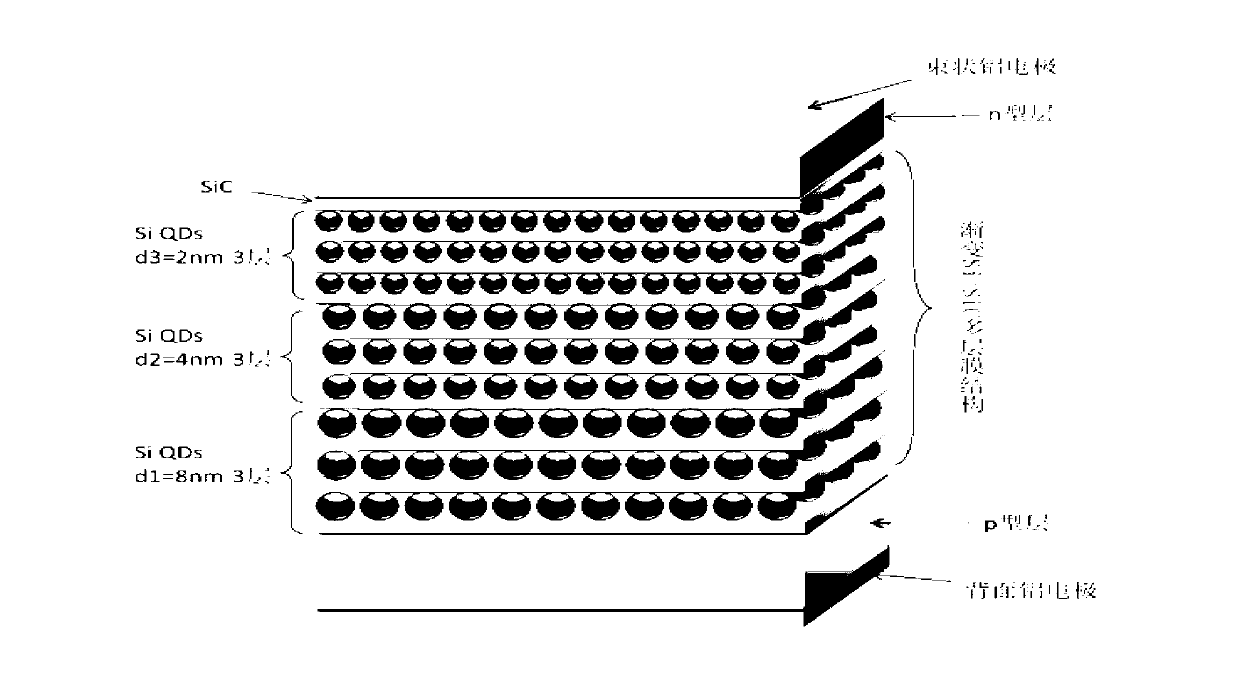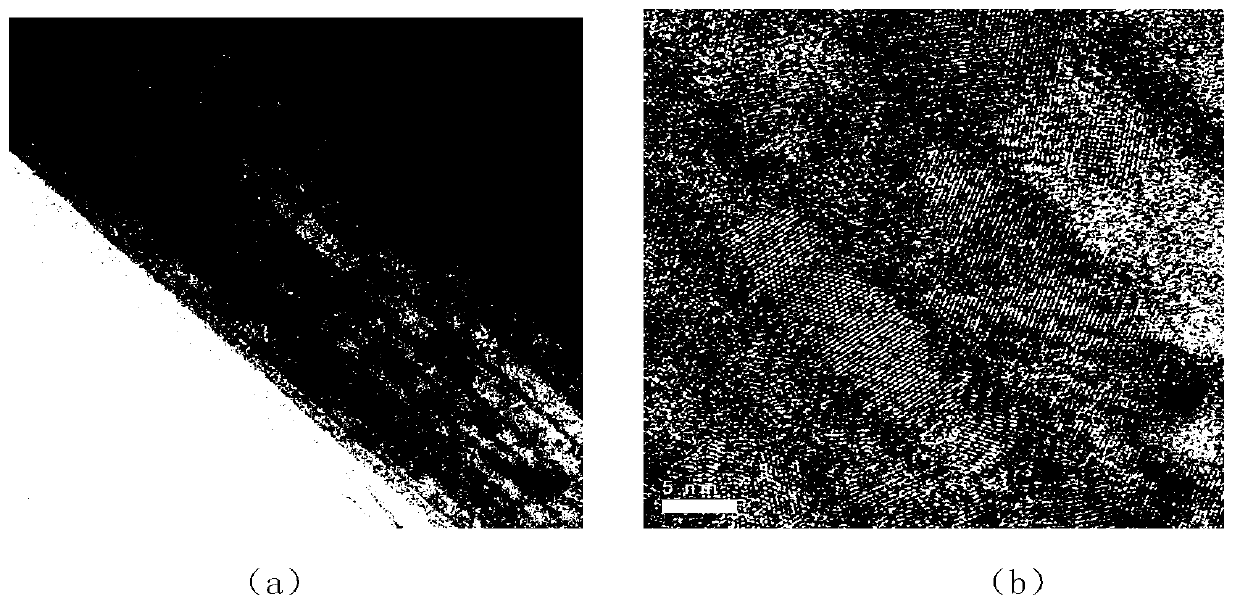Solar battery with band gap gradual changing silicon quantum dot multilayer film and production method thereof
A technology of silicon quantum dots and solar cells, applied in circuits, photovoltaic power generation, electrical components, etc., can solve problems such as the decline of collection efficiency and conversion efficiency, unfavorable tunnel operation of transmission channels, and increasing the number of battery interface layers, and achieve good battery response. and energy conversion efficiency, expand the wavelength range of light response, and facilitate mass production.
- Summary
- Abstract
- Description
- Claims
- Application Information
AI Technical Summary
Problems solved by technology
Method used
Image
Examples
Embodiment Construction
[0047] The general steps that the present invention prepares:
[0048] The first step: preparing an amorphous silicon / silicon carbide multilayer film structure with a gradual thickness on a p-type silicon substrate;
[0049] 1-1. Growth by chemical vapor deposition or plasma enhanced chemical vapor deposition in a chemical vapor deposition or plasma enhanced chemical vapor deposition system, the substrate temperature is controlled at 250°C, the radio frequency power can be varied between 30W and 50W, and silane is used (SiH 4 ) and methane (CH 4) mixed gas as a reaction gas source, and a hydrogenated amorphous silicon carbide film with a certain thickness is deposited on a p-type single crystal silicon substrate;
[0050] 1-2. After the deposition of the hydrogenated amorphous silicon carbide film is completed, the methane gas source is turned off, and only silane gas is introduced to prepare the hydrogenated amorphous silicon film;
[0051] 1-3. The above two processes are...
PUM
| Property | Measurement | Unit |
|---|---|---|
| thickness | aaaaa | aaaaa |
Abstract
Description
Claims
Application Information
 Login to View More
Login to View More - R&D
- Intellectual Property
- Life Sciences
- Materials
- Tech Scout
- Unparalleled Data Quality
- Higher Quality Content
- 60% Fewer Hallucinations
Browse by: Latest US Patents, China's latest patents, Technical Efficacy Thesaurus, Application Domain, Technology Topic, Popular Technical Reports.
© 2025 PatSnap. All rights reserved.Legal|Privacy policy|Modern Slavery Act Transparency Statement|Sitemap|About US| Contact US: help@patsnap.com



